Mute Swan Problems
|
|
Pinioned | Food | Subject to Illnesses | Pine Needles | Miniature Railway | Predators
Nesting | Territoriality | Droughts | Hurricanes | Flooding | Cold and Heat | Common Swan Ailments
|
Life as a swan is not easy at all. Although it appears idyllic at first glance to see the swans swimming on the blue water of the Lagoon under a radiant sun or a pink sunset, one has to be very tough to keep witnessing the daily life of a swan in a semi-wild environment. ►Can't fly: As explained in the Swan Facts, the Mute Swans of Lost Lagoon have all been pinioned (wing tendons clipped) so that they can't fly. When confronted with a sudden attack by a natural predator (dog, coyote or raccoon) or by humans, not being able to fly away can at times be fatal. ►Food: They are sometimes given food by well-meaning visitors to the Lagoon that is detrimental to their health or can even cause serious problems. Specially, when a mother is nesting, please don't throw food at her (or anything else) because food will attract predators who will eat the eggs or harm the mother. ►Illnesses: They are subject to illnesses like all of us. Most of the time, the Management of the Lagoon can only become aware of the presence of a serious illness like heart worms or E.coli when a swan is almost unable to move or already dead (necropsies are performed on dead swans). ►Lethal Pine Needles: When kept in an environment where there are pine needles on the water like at the Miniature Railway pond in Stanley Park, they get these needles in their mouth while eating and drinking and the needles get stuck under their tongues. Besides undoubtedly being very painful, this situation, when allowed to last many weeks, results in the needles forming a cushion under their tongue, blocking their mouth so they can no longer swallow their food. They slowly die of starvation under the eyes of unsuspecting visitors who find them so beautiful and who would be extremely upset if they knew what is going on. Luckily, Lost Lagoon does not have pine needles. No swans should ever be kept at the Miniature Railway pond. ►Surrounded by predators: When kept in an environment where their available water surface is small and where there are predators like families of raccoons all around, the swans can't put a foot on solid ground because they could quickly be eaten for breakfast. Again, a situation like this one is not always obvious to visitors; this is why, when in doubt, it is always good to ask questions. ►Nesting Time: At nesting time, the Lost Lagoon swans lose their eggs and cygnets much of the time. It is rare that a cygnet grows to adulthood. First, the eggs are eaten by natural predators like raccoons and otters. Almost every year, people throw rocks at the eggs and nesting mothers; in the Spring of 2003, someone threw oil on them. When they hatch, the small cygnets can be eaten by the large carp that live in Lost Lagoon and by their natural predators like raccoons, coyotes, skunks, mink, herons, etc. Mothers and cygnets are often bothered by people who stand too close to their nest to watch them. Please stay back from the fences that the Park Management erect around the nests. When they hatch, the small cygnets are eaten by the large carp that live in Lost Lagoon and by their natural predators like raccoons, coyotes, skunks, mink, herons, etc. ►Territoriality: Mute Swans are very territorial. A strong swan like Precious for example can spend a large part of his day chasing other swans from his territory. Papa does the same, although his territory is much smaller than Precious' area. A healthy chase is certainly good exercise and the daily chases are normally nothing more than crossing the Lagoon during 10 minutes at top "swan speed". But chases can become serious when the aggressor catches the head of the victim in its bill and keeps it under the water while getting on the back of the victim until the latter drowns. This is a sight that Lagoon visitors can only witness without being able to help. In addition, territorial males at the Lagoon have been seen drowning cygnets that belonged to another swan family.
Here are the main topics copied from this article:
►Droughts cause a potentially hazardous threat to captive swans especially when they occur during the nesting season. Inability to access water or climb steep banks and walking to find a good watering source can be deadly to swans. Swan keepers around the state of Florida asked The Regal Swan® researchers how to control water levels and make banks accessible to young swans and cygnets. Upon investigating these questions, the researchers used various materials to construct and test ramps for the young birds. Some were successful and others failed miserably. Sandbags and sod were good materials, but eventually eroded or floated away under the weight of constant climbing by the adult swans. The researchers contacted Ken Myrick, founder of PetStep®, a manufacturer of pet ramps, to ascertain if the ramps could provide swans with easy access to steep banks. PetStep® provided a ramp and the ramp was installed near the steep bank and held in place by sod and sandbags. The sides of the ramp were shored with more sandbags and sod so that the young cygnets could not fall from the ramp. The PetStep® ramp was immediately adopted by the young birds as a source for entering and exiting water (see photo below). However, the adult swans could not stay on the single ramp. The swans’ ungraceful gait on land as well as their wide, top-heavy bodies made it almost impossible to keep their feet on the single ramp while walking. Myrick was notified of the problem and quickly offered the suggestion to use two ramps clamped together. Again, another ramp was shipped. With the assistance of PetStep, the ramps were safely and securely clamped together. Sod and sandbags were replaced around the two ramps where the adult swans were located. Within minutes, the adult swans were able to traverse the ramps in and out of the water (see photo below). Orange Lake took an additional step to rectify the problem and constructed pens five feet from the water’s edge. The pens have self-contained ponds which are flush with the ground and have daily irrigation and drainage capabilities (see photo below). If swan keepers do not have access to pen materials or funding for such an elaborate pen setting, the use of the PetStep® ramps will help solve the problem of swans entering and exiting water during droughts. Droughts and floods are also serious concerns for swan keepers in the southeastern United States. Alligators, bobcats, coyotes, raccoons, opossums, turtles and other carnivores are predators to both captive and wild swans. Eggs, young swans and even adults can be an easy meal for opportunistic predators. During times of severe drought or flooding, animals are displaced and look for other areas to inhabit and find food. Dry-land animals, such as bobcats, look for higher ground during floods while wetland animals such as alligators look for wet areas during times of drought. Animals may roam outside their normal woodland or wetland habitats and ultimately encounter captive swans. Alligators not only look for food sources during the drought, but bodies of water with at least six feet of water for mating. The alligator mating season in Florida runs in conjunction with the swan nesting season. Wandering swans looking for water as well as nesting swans must be penned during times of drought. Water must be readily provided, but the pens must also be protected from the alligators which can climb chain-link fences. ► Hurricanes present a whole new problem for the swan keeper in captive settings. At Orange Lake, the swans are under 24-hour 7-day-a-week veterinary medical care by Drs. Geoffrey R. Gardner and Christopher W. Brown. The swans are brought indoors during impending severe weather or major hurricane warnings. The swans have even been evacuated to other areas of the state when a major hurricane threatens.Although Orange Lake only has six swans, flock size becomes a major consideration regarding the reasonable construction of shelter or the feasibility of moving the swans to higher ground. Hurricanes generate floods and excessive winds. Flooding prevents the young birds from seeking high ground and maintaining dryness. The inability to remain warm and dry can lead to hypothermia which can progress to an infection such as pneumonia. Excessive winds can break a swan’s neck or wing or launch the bird into nearby structures. Removal of any materials which may become missiles in and around swan habitats must be undertaken prior to a storm’s approach. In any case, shelter must be provided. ► Flooding prevents the young birds from seeking high ground and maintaining dryness. The inability to remain warm and dry can lead to hypothermia which can progress to an infection such as pneumonia.Floods are also serious concerns for swan keepers in the southeastern United States. Alligators, bobcats, coyotes, raccoons, opossums, turtles and other carnivores are predators to both captive and wild swans. Eggs, young swans and even adults can be an easy meal for opportunistic predators. During times of severe drought or flooding, animals are displaced and look for other areas to inhabit and find food. Dry-land animals, such as bobcats, look for higher ground during floods while wetland animals such as alligators look for wet areas during times of drought. Animals may roam outside their normal woodland or wetland habitats and ultimately encounter captive swans. Alligators not only look for food sources during the drought, but bodies of water with at least six feet of water for mating. The alligator mating season in Florida runs in conjunction with the swan nesting season. Wandering swans looking for water as well as nesting swans must be penned during times of drought. Water must be readily provided, but the pens must also be protected from the alligators which can climb chain-link fences. ► Extreme cold and excessive heat can greatly influence the ability of a swan to maintain homeostasis in their normal body temperature of 106 degrees F. Hypothermia can lead to pneumonia or other respiratory infections while hyperthermia can lead to heat stress and dehydration. A swan keeper must provide ample shelter for weather elements and maintain a good rapport with a knowledgeable avian veterinarian in the event of illness or injury.
Swan pens at Orange Lake Resort & Country Club in Orlando, Florida (Photo: Regal Swan).
An adult swan using double PetStep® ramps (Photo: Regal Swan).
A cygnet using a single PetStep® ramp (Photo: Regal Swan).
(taken from a reply posted on this site by the The Regal Swan®)
Swan ailments are too numerous to mention, but here are the most common ailments which you may readily see. ►Botulism: Swans are bottom feeders which means they can pick up bacteria known as anaerobes (oxygen free microbes) which produce a neurotoxin (Botulinum) Botulism poisoning affects the neuromuscular system which controls swallowing and breathing. The first clue to this type of poisoning is that the swan cannot hold its head and neck erect (the reason that botulism is sometimes known as limberneck). The condition is usually fatal. Cygnets should receive a vaccine against botulism beginning at 3 weeks of age and continuing every three weeks until 5 months of age. Adult swans are vaccinated once a year. ►Lead Poisoning: Bottom feeding can also cause the swans to contract Lead Poisoning from ingesting lead shot or fishing weights (many years ago, lead weights were commonly used in fishing). ►Fishing lines/hooks: Besides ingesting fishing weights, swans can also become entangled in fishing lines, swallow or be pierced by fishing hooks. It is for this reason that fishing in swan inhabited areas should be strongly discouraged. Daily inspection of the swans will help you observe any entanglement or impairment from fishing line, hooks, etc. ►Predators such as bobcats, turtles, raccoons, alligators and humans can also produce many types of wounds. It is for this reason that all swans should be given a close inspection on a daily basis. If any wound is observed, veterinary medical care should be sought to prevent further infection or complications. ►West Nile Virus and Encephalitis: West Nile Virus is a mosquito borne disease that can kill swans. If you are in an area laden with mosquitoes, a vaccination against the disease should be given once a year for adult swans. Waterfowl such as swans and other avian species can also contract Encephalitis from mosqitoes. You can learn more about our research regarding the prevention of Botulism and West Nile Virus through vaccines as well as general swan keeping practices in our book, A Swan Keeper's Handbook: A Guide to the Care of Captive Swans, Krieger Publishing, Malabar, Florida. ►Mold in swan food (cracked corn and layer pellets) can cause the birds to get sick. Ensure that feeders are checked on a regular basis especially after rain to remove any wet or clotted food. ►Egg Sac Peritonitis: Baby swans (cygnets under 3-4 weeks of age) can be prone to Egg Sac Peritonitis in which the egg sac does not fully separate or disintegrate. This is an extremely hard ailment to diagnose and usually a rare occurence, but it can happen. If cygnets are dying for no apparent trauma or other cause, this would be an area for your veterinarian to investigate through a necropsy. ►Bumblefoot is a condition that waterfowl, ducks, geese and swans can become affected by having to traverse very rough, rocky or gravel laden ground. The rough terrain causes small cuts resulting in an infection which may begin at the base of the foot and then progresses to a large hard knot on the bottom of the foot. Eventually, the foot will curve under. ►Spraddle legs: Handling young swans can produce spraddle legs in which the bird's legs form outward. Prevention is DO NOT OVER HANDLE the cygnets or ensure that the cygnet's legs are directly under the bird as it sits in the palm of your hand. ►Angel wing (also known as slipped wing), can be either genetic or dietary. Research has shown that if the condition becomes problematic and is caused by the diet, adding alfalfa to the swans' diet will help reduce the high protein content which is believed to be the cause. ►Pink discoloration: We are also presently working with Dr. Leonel Mendoza, Michigan State University and Her Majesty's Swan Warden in England as well as various swan specialists throughout the U.K. We have been seeing an increased occurence of swans turning pink in color immediately prior to or during the molt. The discoloration is being caused by a bacteria. If the pink discoloration appears, we are recommending the use of two Proctor & Gamble products. In the U.S., the product is known as Dawn and in the U.K. it is Fairy Liquid. Basically, washing the birds in one of these products will remove the bacteria which is causing the discoloration. The birds should be placed in a shelter for a couple of days following the bathing so that their preen oil can be replenished by the oil gland. If you place the birds back into the water too soon, the birds can drown because the feathers are not water repellant or they cannot adequately warm themselves resulting in a possible respiratory infection. ►Avian Flu (various forms-depending upon where the swans reside), Tuberculosis, Aspergillosis, Marek's disease, Newcastle Disease, Avian Pox, etc., are diseases which waterfowl and other avian species can contract. The probability of getting any of these types of diseases totally depends upon the environment, climate and contact with other wild avian species. Your chances of seeing any or one of these diseases is relatively reduced in a captive setting where proper daily upkeep and veterinary medical care is provided. ►Parasites: Swans can also get parasites such as nematodes, heartworms (from the lice found in feathers) to Giardia, which can make them lethargic, etc. ►Rhinosporodiosis is another condition that we have been researching with Dr. Leonel Mendoza. The swans can contract an eye cyst produced by the protozoa Rhinosporodium seeberi. This cyst should be removed by an experienced veterinarian. ►Various cancers can also be found in swans. Yearly check-ups by an experienced avian veterinarian will usually prevent most of the above maladies. Yearly blood and fecal exams will let you and your veterinarian keep a watchful eye on the swans and will provide normal health baselines for comparison if something goes wrong. We hope that this information is of benefit. As stated, this is an area of broad coverage and we can only address some of the more common maladies in this space. The Regal Swan.
Swan Keeper's Handbook: A Guide to the Care of Captive Swans | |
|
|
- NEW: Swans building nest in inappropriate area by: Victoria
- NEW: Grieving behaviour after chased cygnet is killed? by: Maxine
- NEW: Re: Swan flight by: The Regal Swan
- NEW: Grieving behaviour after chased cygnet is killed? by: Maxine
- Wild swans at Lost Lagoon? by: Miki and Fiona
- Fiona and the swans by: Message from Karen
- Royal swan fight by: Just trying to kill each other!
- Fiona and the swans by: Message from Karen
- We’re Walking on Air! by: Fiona
- "Attempted Murder" by: Jřrgen Bjerring

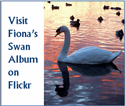
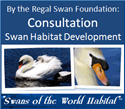
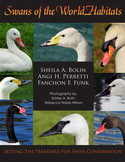

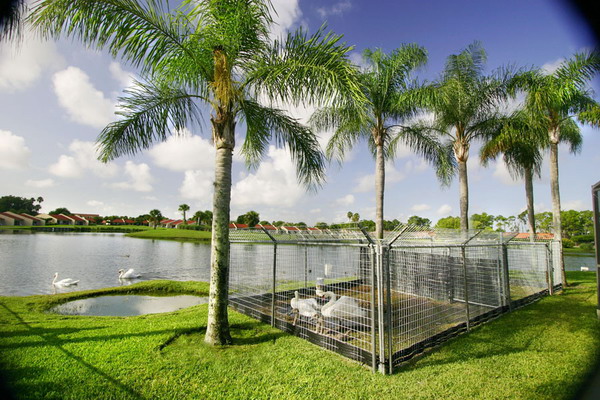
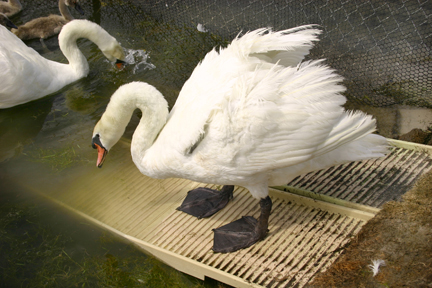
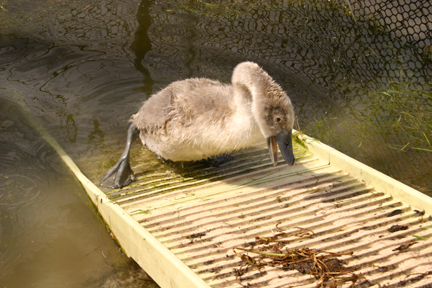
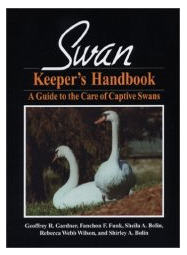
 I have just been in Vancouver for a couple of days and just prior to leaving I took a 5 mile stroll around Stanley Park culminating at Lost Lagoon. There I saw Fiona feeding the swans and I have to..
I have just been in Vancouver for a couple of days and just prior to leaving I took a 5 mile stroll around Stanley Park culminating at Lost Lagoon. There I saw Fiona feeding the swans and I have to..
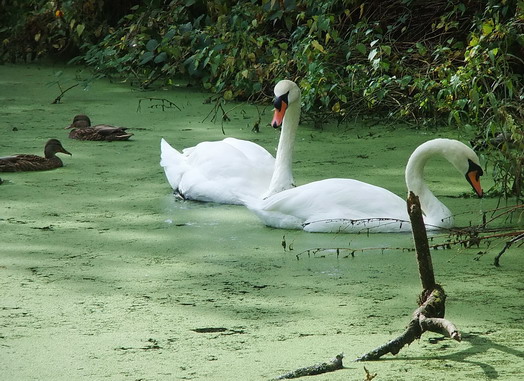 Having just returned home from a trip to see our former Lost Lagoon swans Tristan, Marika and Bijan in their new location, our happiness cannot be measured. We already knew they were in an ideal..
Having just returned home from a trip to see our former Lost Lagoon swans Tristan, Marika and Bijan in their new location, our happiness cannot be measured. We already knew they were in an ideal..
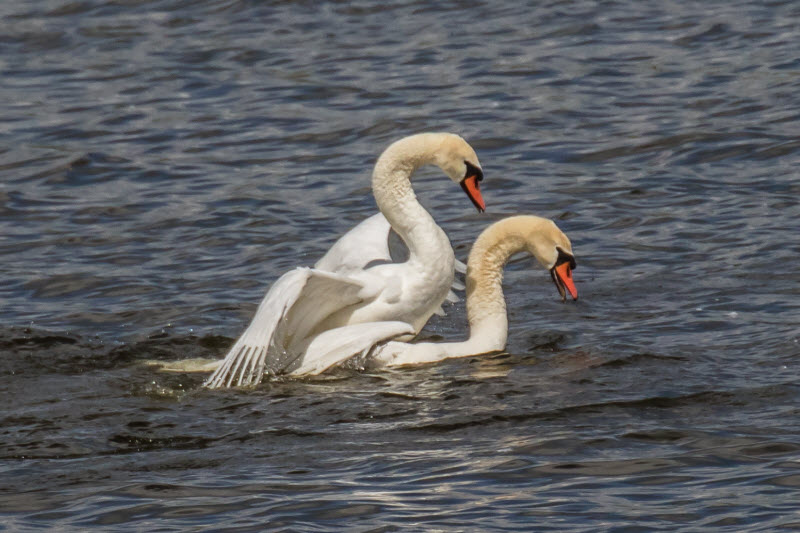 Yeasterday - May 22 - I saw two Mute Swans in close contact. During the foreplay the biting was not very aggressive and after a couple of minutes it could look like a mating. But after 15 seconds the..
Yeasterday - May 22 - I saw two Mute Swans in close contact. During the foreplay the biting was not very aggressive and after a couple of minutes it could look like a mating. But after 15 seconds the..
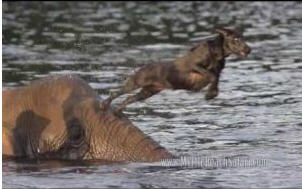 The relationship of Bubbles and Bella developed because of their shared love of the water. The pursuit of "aquatic antics" instilled a strong bond between these unlikely pals. Watermark on..
The relationship of Bubbles and Bella developed because of their shared love of the water. The pursuit of "aquatic antics" instilled a strong bond between these unlikely pals. Watermark on..

